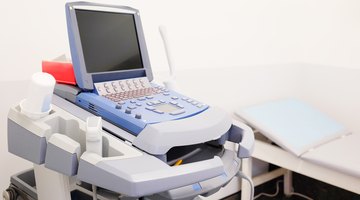Immediate Side Effects After Having a Mirena Inserted
The Mirena intrauterine device (IUD) is used to prevent pregnancy. It is inserted into the uterus by a health care provider. The device is T-shaped and made of plastic. It contains levonorgestrel, a synthetic female hormone that helps in preventing ovulation, which makes pregnancy unlikely. Mirena should be removed and/or replaced every five years. According to RxList.com, Mirena is as effective in preventing pregnancy as sterilization as long as it is properly in place.
Process of Insertion
A health care provider prepares for the insertion of the IUD by placing a speculum into the vagina and opening the tissues to reveal the cervix. A special inserting tool is loaded with the Mirena IUD and then placed inside the vagina. It is advanced all the way up to the uterus. The device is then released and allowed to stay in the uterine opening. The inserting tool is then withdrawn. A woman may feel mild pain, cramping and pressure during the exam and placement of the IUD. These side effects should pass within a day.
Immediately After Insertion

Mirena Side Effects & Sciatica
Learn More
For several days a woman may experience mild discomfort including cramping, spotting and sensitivity from the tools used to insert the device. This should pass without further complications. If it extends beyond a few days, it may signify a complication with the IUD. Some women, according to Drugs.com, may not have a period while the IUD is in place. This can last for a short period of time or for as long as the device is in the uterus. Menstrual flow and cramps may be reduced or increased while the Mirena IUD is in place.
Vaginal itching and odor may result if bacteria was introduced to the uterus and vagina during insertion. This can be an indication of infection. The device should not interfere with the use of tampons or sexual intercourse. If the device or the removal threads are intrusive, the device may not be placed correctly.
Other Side Effects
Drugs.com suggests some women may experience abdominal or pelvic pain, ovarian cysts, headache or migraine, depression or mood changes, breast tenderness, or pain and/or vaginal discharge. These side effects can be due to the insertion of the device or the hormones. Should the IUD be expelled from the uterus, a woman can become pregnant or experience bleeding and pain. Removal is necessary and it may require surgery. Pregnancy that occurs while Mirena is in place has a high likelihood of being ectopic, or occurring in the fallopian tubes.











